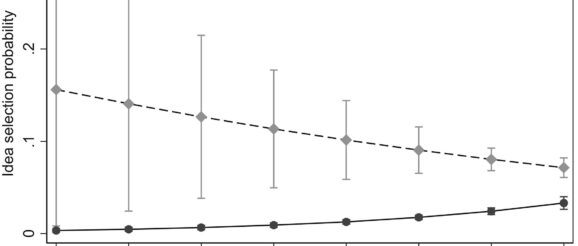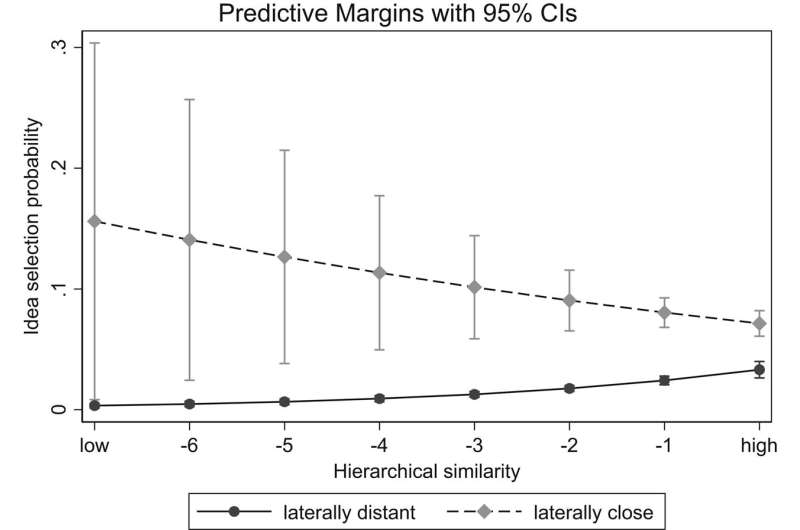Internal crowdfunding fosters innovation and engages employees, finds study


In a several-round-long crowdfunding initiative, the employees of Siemens AG not only had the opportunity to present their own ideas on an in-house online platform; in the role of investors, they were also able to choose which projects to implement. In other words, they had a chance to do things normally reserved for managers: make decisions and allocate budgets.
The researchers assessed how well this distributed decision-making approach worked and the corresponding role of hierarchies. Their conclusion, “Employees submitted high-quality ideas, which their colleagues recognized and financially supported,” says Christina Raasch, a Professor of Digital Economy at KLU and researcher at Kiel Institute for the World Economy (IfW).
However, these investors weren’t wholly unbiased; they tended to support the ideas of employees at their own hierarchical level. As Raasch explains, “Similarities with the person who submitted it increased their identification with the idea and promoted a sense of group identity, leading to a more positive evaluation.” And the more innovative the idea was, the more pronounced this effect was. In contrast, when investors and creators were competitors, the amounts invested tended to be smaller.
Tapping hidden know-how and fostering employee loyalty
Nevertheless, at the end of the day, the advantages of idea competitions with distributed decision-making are self-evident: They allow in-house know-how that is distributed throughout the company and perhaps going to waste to be tapped, while also promoting exchanges and collaboration across internal borders.
“In addition, we observed that employee loyalty and motivation improved when their ideas were appreciated and their decisions were respected—the management had no veto power,” Raasch reports. Further, the approach helps to manage larger numbers of ideas, since there are more shoulders to bear the burden.
Viable paths to joint innovation
To ensure that companies and employees alike reap the maximum benefits of internal crowdfunding, the processes involved have to be carefully thought through and adapted to the company in question. To ensure the investors aren’t overwhelmed with too many ideas, larger companies should form smaller groups of creators.
The management has to stand behind the idea of putting decision-making power in the hands of employees—and can’t snatch it back later. It also needs to be clear where the money the investors are meant to allocate comes from. In most cases, creators want to present their idea together with their own name. Christina Raasch explains why, “This kind of visibility boosts motivation and satisfaction for everyone involved—which is more important than any minor skewing affects in the evaluation.”
Any company that wants to be innovative and foster new ideas also has to ensure that, if an idea fails, it has no negative consequences for either the creator or the investors; rather, it has to be part of the company’s learning culture. After all, innovations always involve a degree of risk. Another important factor is whether or not investors are anonymous: When investors’ identities are known, they tend to evaluate more thoroughly, but are also more cautious and could be put under pressure by creators.
“Another possibility would be to only reveal the identities of the investors for ideas that are implemented,” Raasch suggests. “But I normally recommend permanent anonymity to avoid any potential fallout for investors.”
How the study was conducted
Since 2015, Siemens has implemented nine rounds of financing with internal crowdfunding. Here’s how it works: Employees submit their ideas for projects, together with the projected benefits for the company, on a shared platform. All employees can “like” the ideas and share their feedback. Up to a given deadline, creators can continuously refine their projects.
Then, a limited number of anonymous investors—all employees are eligible to sign up, and the investors are selected at random—receive a budget, assess the ideas, and are free to allocate funding in 1-euro increments. Those ideas that reach their funding target are green-lighted.
The team of researchers analyzed the data from the idea platform in anonymized form, assessing e.g. how new the ideas were, the investment choices made, and the hierarchical levels involved—factors that were integrated into the study. In addition, they spoke with creators, investors and managers, and conducted an online survey of employee perceptions of the platform’s benefits. The resulting information offered them deeper insights into internal crowdfunding at Siemens.
The study is published in the Strategic Management Journal.
More information:
Tim G. Schweisfurth et al, Distributed decision‐making in the shadow of hierarchy: How hierarchical similarity biases idea evaluation, Strategic Management Journal (2023). DOI: 10.1002/smj.3497
Internal crowdfunding fosters innovation and engages employees, finds study (2023, October 25)
retrieved 27 October 2023
from https://phys.org/news/2023-10-internal-crowdfunding-fosters-engages-employees.html
part may be reproduced without the written permission. The content is provided for information purposes only.
